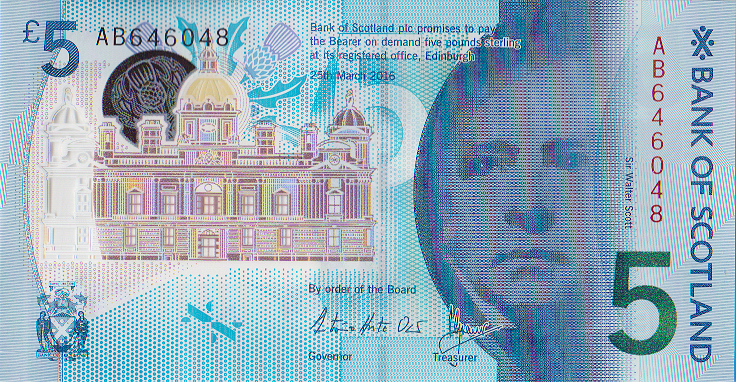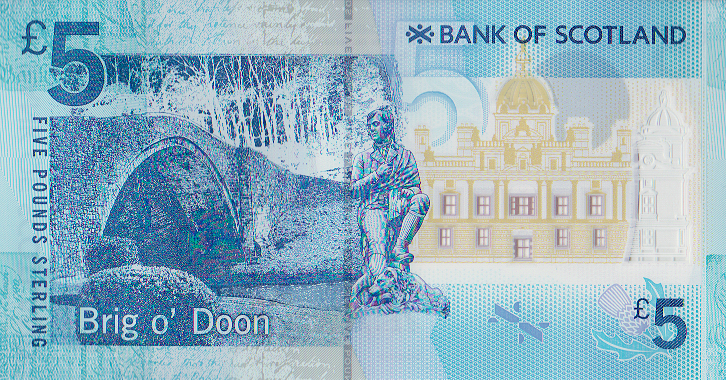


In 1826 a threat to the issue of the Scottish £1 notes arose. Following the failure of 60 banks in England with considerable losses to the public an Act was passed forbidding the circulation of notes under £5 in England. The threat to the £1 notes - the only paper currency familiar to the great masses of the Scottish people - aroused widespread criticism especially as only two banks in Scotland had failed. Sir Walter Scott, writing as Sir Malachi Malagruther, came to the defence of Scottish banking and Members of Parliament, the Press and a host of pamphleteers joined the clamour against conforming to the English style. Of course, Sir Walter Scott´s bankruptcy at the time may have encouraged him to help the banks!
A Parliamentary enquiry was set up specifically to enquire into the issue of bank notes in Scotland and Ireland and, more generally, to enquire into the whole system of banking. Such was the clamour from Scotland that Parliament appointed a committee of enquiry which found that Scottish banking was -
a system admirably calculated to economise the use of Capital to excite and cherish a spirit of useful Enterprise, and even to promote the moral habits of the people, by the direct inducements which it holds out to the maintenance of a character for industry, integrity and prudence.
BCCI and Barings Bank eat your heart out!!
The result was that the Scottish banks were allowed to keep their note issues. But this enquiry also meant that legislators in London became increasingly aware of the Scottish system of banking and its successes compared with the English system and its weaknesses.
In acknowledgement of Sir Walter Scott's influence which resulted in Scottish banknotes continuing to exist, Bank of Scotland has featured a portrait of the novelist on the front of all their banknotes since the tercentenary of the bank in 1995.
In addition to Sir Walter, the banknotes feature on the front the Bank of Scotland Headquarters and crest, an image of four thistles and the Bank of Scotland logo. The windows of the building are transparent in the plastic and so also appear on the rear of the note. Another security feature is the 5 printed on the face being in metallic ink that changes colour as the note is tilted.
On the rear of the note (one of the Bridges series of notes is Brig o´Doon in Ayr, made famous by Robert Burns (seen sitting beside the bridge) and a representation of the Bank of Scotland HQ on the Mound in Edinburgh (with transparent windows as on the front).

 Home Page
Home Page
Where else would you like to go in Scotland?

